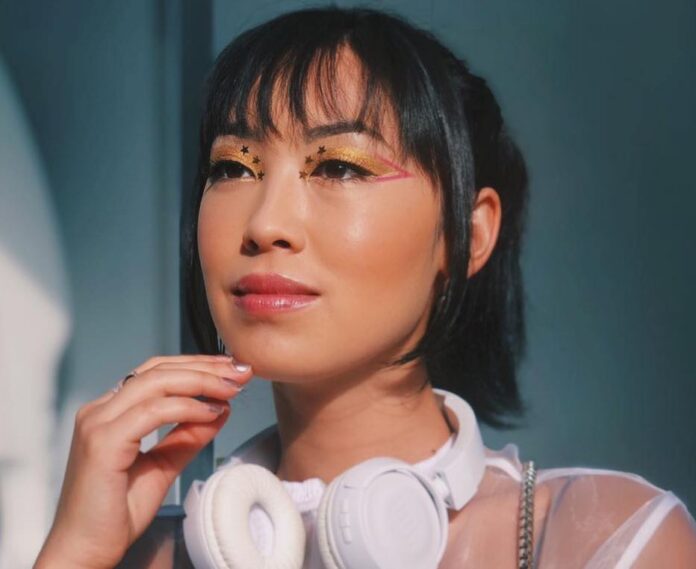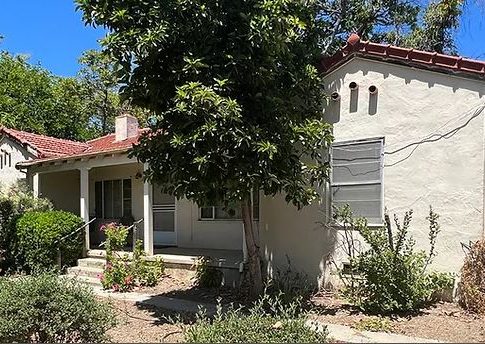By Seiji Yamashita
On the evening of March 16, Ana Hikari’s phone wouldn’t stop ringing with the news of the Atlanta shootings. Hikari, a Brazilian actress of Japanese, Black, and Indigenous descent, is one the first Asian actresses to play a leading role in a Brazilian soap opera, and both her friends and her more than a million Instagram followers immediately looked for her reaction to the grim news.
“As soon as something happens, I always try to speak up,” she said. “But specifically for this terrorism act, I didn’t have the strength. It was so close to me that, that day, I couldn’t speak.”
Hikari is one of many members of Brazil’s Asian diaspora who started speaking out about anti-Asian racism in recent years, especially after the term “Asian Brazilian” became more prominent in 2016. The wave of violence in the United States has prompted Asian Brazilians to renew discussions about the racism they face.
At worst, Asian Brazilians, who make up 1 percent of Brazil’s population, worry that they too may be targeted. Brazilian President Jair Bolsonaro and his administration frequently use anti-Chinese rhetoric, much like former American President Donald Trump. In one instance, an education minister mocked Chinese accents in a since-deleted tweet.
LATEST STORIES
His message insinuated that Covid-19 was part of a Chinese conspiracy for “world domination.” Vaccine hesitancy has also ensued, with phrases like “vacChina,” combining the Portuguese word for vaccine, vacina, with China.
But longstanding prejudices exist beyond the politics of today. Activists have spoken out about the fetishization of Asian women; yellow peril, which suggests that Asians are unassimilable and a threat to Western values and cultures; and the model minority myth, a stereotype that posits that people of Asian descent are smart, wealthy, and successful immigrants.
The model minority myth downplays the effects of racism as well as the ethnic and class diversity in Asian communities. A common phrase in Brazil that reflects the model minority attitude is that in order to attend university, one must “kill a Japanese.”
Asian Brazilian’s have not experienced reported violence like their Asian American counterparts, but that may be due to differing degrees of privilege within Asian Brazilian communities. This difference in privilege dates back to early Japanese immigration and is strongly influenced by ideas of white supremacy and eugenics, according to Ana Paulina Lee, a professor of Latin American and Iberian Cultures at Columbia University.
When Brazil became the last country in the Americas to abolish slavery in 1888, the country enacted an immigration policy that would replace slave labor while “whitening” society. The government encouraged immigration from Europe while restricting all immigration from Asia and Africa. An exception was made for the Japanese, whom Brazil considered “white,” according to Lee.
As a result, Japanese Brazilians account for 1.6 million out of roughly 2 million Asian Brazilians, and this community has been established in Brazil for generations. While their relatively privileged status protects Japanese Brazilians, Lee suspects there are unreported acts of violence in undocumented or immigrant Chinese communities.
“Even if they are experiencing any kind of violence, they cannot go to the police,” she said. “If they’re suffering, there’s no way to know because they’re undocumented immigrants. They’re not protected.”
Chinese communities have been affected by racism in the past. Chinese immigrants have been targeted by thieves due to stereotypes that they carry cash and that they will not report crimes committed against them, according to Carlos Freire da Silva, a sociology professor at University of Sao Paulo.
Many Chinese immigrants who operate small businesses in sectors like wholesale technology parts are also vulnerable to racism coming in the form of extortion or unfair fees by the police and landlords when navigating complicated tax and regulatory rules. As a result, Chinese Brazilian Associations began to serve as intermediaries between immigrant business owners and the government or landlords, according to Freire da Silva.
Stereotypes about Chinese businesses, which are associated with selling cheap counterfeit products, lead to racist perceptions towards Chinese Brazilians as well.
“Some of the adjectives that are applied to describe the affordable goods imported from China are (also) used to refer to the migrants themselves,” said Douglas de Toledo Piza, Assistant Professor of International Affairs at Lafayette College. “The Chinese were then very quickly labeled as poor, uneducated, dirty, and unassimilable, because of the association with the informal economy.” The connection with the informal economy also led to a common trope that Chinese businesses are affiliated with Chinese mafias or organized crime, according to Piza.
For more privileged Asian Brazilians, such as the Japanese Brazilians, discussing racism can be complicated. The model minority myth affords Asian Brazilians many privileges when compared to Black and Indigenous communities.
For instance, many Asian Brazilians do not have to fear the police to the same degree.Hikari, for example, felt that her experiences were insignificant compared to the experiences of her father, who is Black and Indigenous. She understood the violent form of racism Brazil’s Black community endures, but when it came to describing anti-Asian racism, for years, she struggled to convey its perniciousness, despite enduring its effects every day.
“I felt that something was wrong, but I couldn’t speak about it because I didn’t have the vocabulary to name it, the bad things that were happening.”
In Brazil, openly racist comments are more common than in the United States, according to Jeffrey Lesser, a history professor at Emory University.
“It’s understood culturally, by the speaker, as simply descriptive, even if it’s understood by the receiver, as quite racist,” he said. Offensive statements come in the form of jokes or comments about physical appearance. Many Asians hear phrases like “slanty eyes,” for example. When Lesser takes research students to Brazil, he warns them about hearing comments they never would in the United States.
Discussions about racism took a step forward around 2016. Brazilians of Asian descent began using the term Asian Brazilian to identify themselves, as opposed to identifying themselves by specific ethnicities like Japanese, Korean or Chinese, according to Lais Miwa Higa, an Okinawan-Brazilian activist and doctoral researcher at University of Sao Paulo.
Higa is part of a group that helped lead this movement, Plataforma Lótus-an Asian-Brazilian feminist group that hosts discussions, fairs and creates educational material. Young Asian Brazilians built online community spaces to share their experiences and engaged in a shared process of learning about their own and each other’s histories.
“We were discovering our differences, but also our similarities,” said Higa.
Frequently these groups also occupied the intersectionality between Asian activism and movements like feminism and LGBTQ activism. A feminist photoblog features Asian Brazilian women.
In other groups, Fernanda Nakandakari felt her experience as an Asian Brazilian was not represented. She co-founded Projeto Asiatique, a feminist photoblog that features Asian Brazilian women, when she struggled to relate to other feminist groups she was involved with.
“I remember trying to talk about how different my experience was, but I was not feeling I was in the right circles to talk about it,” she said. “I am not the protagonist of this movement. I am never the protagonist.”
Simultaneously, a popular YouTube channel called Yo Ban Boo, a play on the words “yo” as in hello and bamboo, promoted Asian Brazilian identity. It looked towards an Asian American YouTube channel called Wong Fu Productions for inspiration.
When Leo Hwan, a co-founder of the channel, was in film school, he watched Asian American media and began to think about his own Brazilian identity. “It really touched me how Asian Americans talked about being Asian what it means to be Asian growing up in America,” he said.
The movement took another step forward in 2017 when Hikari became a household name for her protagonist role in the famous Brazilian soap opera Malhação: Viva a Diferença, which won an International Emmy Award. She immediately utilized her platform to speak out on issues of race, whether it’s on Instagram live, Twitter or Tiktok. “There is no reason for me to have so many followers and not bring information to them,” she said.
The effects were immediate. Hikari influenced younger Asian Brazilians to think about Asian diaspora issues, including those close to her, like Julie Kei, 16, who was cast as Hikari’s younger sister in Malhação: Viva a Diferença. Hikari became a role model for Kei, who rarely saw other Asian actors on set. “It’s so cool to have some person that seems like you,” she said. “You can see yourself in her.”
Hikari also became a sounding board for Kei to discuss issues of race and bias that she had experienced. “I started to talk with Ana about it, and I think that is the point that I realized what’s happening and why,” she said.
“We need to talk about it to change the situation, to stop this, to stop this discrimination.”
Kei was inspired by Hikari to speak out on her social media platforms as well. “When I grow up, I went to have this voice. I went to be a good influence.”
Hwan believes “there’s no going back,” especially given the involvement of younger generations. Since the pandemic, Hwan and Hikari have noticed a renewed interest in their activism which had waned slightly in years prior to the pandemic – along with a spate of new stories of racist incidents.
In February 2020, a Japanese Brazilian woman was verbally assaulted on a subway in Rio de Janeiro. During Carnaval, Hikari herself was singled out by strangers because of her Asian ethnicity. A man accused her of having coronavirus and erroneously called her Filipina, even though she is ethnically Japanese.
Despite the emotional burdens, both find meaning in anti-Asian racism work. “We never talked about that, and talking about it; it’s so empowering,” said Hwan. “We feel that, that was missing in my life.”
For Hikari, she remembers when she rejected her Japanese heritage in order to fit in when she was younger. “I felt like I have to be more Brazilian than a Brazilian person to be accepted,” she said. “Why couldn’t I be Brazilian with my ancestral identity being Japanese. Why couldn’t it be like that?”
AsAmNews has Asian America in its heart. We’re an all-volunteer effort of dedicated staff and interns. Check out our new Instagram account. Go to our Twitter feed and Facebook page for more content. Please consider interning, joining our staff, or submitting a story or making a contribution.










I really like that this is something people are talking about right now. As an brazilian japanese, i can really relate to all that Leo and Ana say. This has always been an issue, but right now I feel I have a space to talk about it.